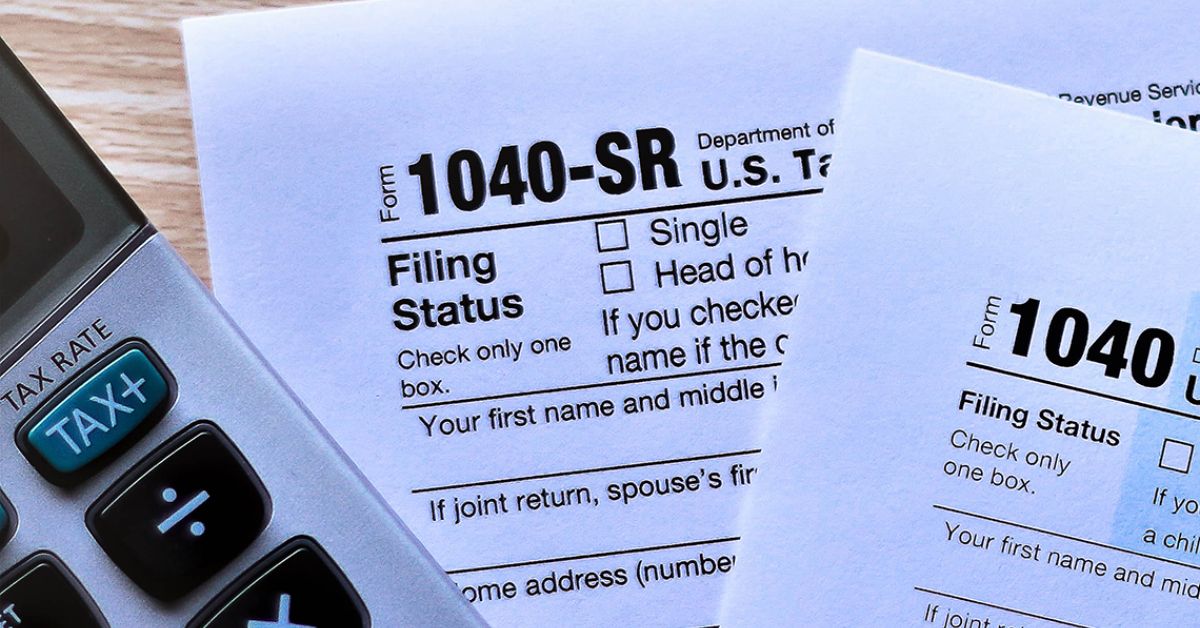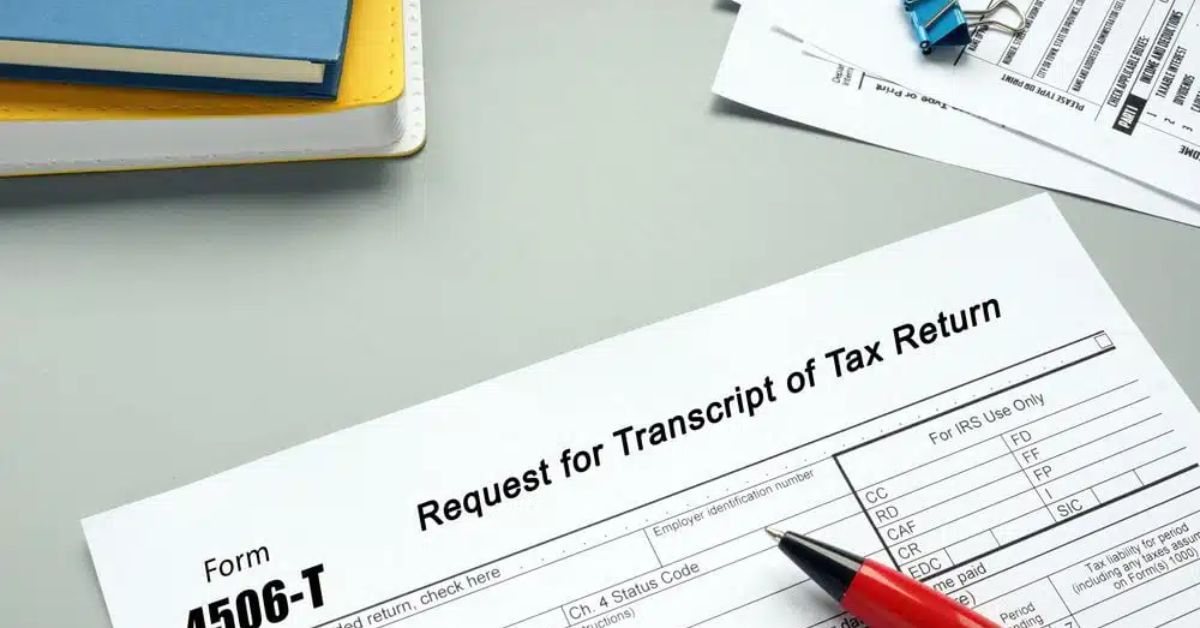If you’re over 65, your money is probably more steady than ever. You might have a pension, Social Security, and maybe some savings or investment income. But such steadiness can also make you an easy target for identity thieves. You might not even know that someone used your name to file a bogus tax return until it’s too late.
Getting the IRS tax transcript isn’t just about the papers; it’s also about keeping your identity safe and being in charge.
Some seniors I dealt with didn’t find out about fraud until months later, when they were told they couldn’t get a refund or when the IRS gave them a notice they couldn’t understand. You can find these problems early with a tax transcript. You can see what has been filed under your name, even if someone else tries to file behind your back. It’s like having a rearview mirror for your tax history.
And here’s the most important part: you can buy it safely, without putting yourself at risk online.
You have choices, whether you want to follow the traditional approach or feel comfortable using the IRS website. But more crucially, you’ll be better able to identify warning signs and protect yourself from identity theft, which happens more often to retirees than most people assume.
Let’s break it down. What is a transcript of taxes? Which one do you really need? And how can you obtain it without letting in scams?
Tax Transcript vs Full Tax Return — A Senior-Friendly Breakdown
First things first, a tax transcript is not the same thing as your whole tax return. But it’s a strong summary, and in a lot of circumstances, it’s all you need to check what was submitted in your name.
Don’t worry if you don’t know which kind of transcript to receive; you’re not the only one. People who have done their taxes for 40 years still get confused. The IRS doesn’t make things easy.
This is the no-nonsense version:
- Return Transcript: This shows most of the things on your original tax return, such as your income and deductions. Good for checking up on things or proving that you filed.
- Account Transcript: Keeps track of payments, penalties, or adjustments made after filing. Great if you’re trying to figure out an IRS notification.
- Wage and Income Transcript: This is a list of all the money you told the IRS you made, such as Social Security, a pension, W-2s, or 1099s. This one is great if you want to find fraud.
- Verification of Non-Filing: Proves that you didn’t submit a return. Lenders or financial programs may need this at times.
If you’re an older person who wants to protect yourself from identity theft, I recommend starting with the Wage and Income Transcript and Return Transcript. These will assist you find out if someone used your name to file something illegal or if your income records reflect what you truly made.
The IRS now hides private information in these transcripts, which is another thing. This means that some of your Social Security number, names, and address may not be fully visible. That’s a good thing since it implies that even if someone obtains your transcript, they won’t get the whole story. But it also means you need to know where to go to make sense of the numbers.

Quick Tip: Don’t immediately email your transcript to a tax preparer or loan officer without thinking about it first. Always check what you’re sharing and why. You have the right to keep your information safe, especially today.
Safe Ways to Order Your IRS Transcript (Without Taking Risks)
Ordering your tax transcript is surprisingly easy, but how you do it matters a lot, especially if you’re worried about privacy or aren’t very good with IT.
I’ll explain both the digital and traditional choices to you so you may pick the one that is safest and easiest for you.
Option 1: Use ID.me to order online through the IRS
This is the quickest option to acquire your transcript if you know how to use a computer or smartphone.
To make an IRS account, you now have to go via ID.me, a safe partner for verifying your identity. That means you’ll need to snap a picture of your government-issued ID, maybe a video of yourself, and answer some questions about your money history.
Not right away the first time, but once you’re in, you can:
- Get your transcript straight immediately (PDF)
- Look at data from many years
- You can check it anytime without having to call or mail forms.
If you want quick access and don’t mind the tech part, this is the best solution. Just make sure you’re on the legitimate IRS website; never click on links to transcripts in emails or texts.
Option 2: Call or write to place an order (no internet needed)
Want to stay offline? Not an issue.
You can ask for your transcript by calling the IRS at 1-800-908-9946 and using their automated system. Or, if you wish to let someone else help, fill out Form 4506-T and send it in.
It takes between 5 to 10 business days for transcripts to arrive in the mail. If the IRS needs to check your identity more, it could take longer.
If you don’t want to share personal information online or just want to keep things old-fashioned, this is the easiest way to do it.
Which Is Safer?
To be honest? If you do things the right way, both are safe. Using public Wi-Fi, clicking on phishing sites, or trusting dubious third-party services are the most dangerous things you can do.
Stay on the IRS website, ask for help if you need it, and don’t rush to give out your sensitive information.
Quick Tip: Don’t let the procedure get to you. Pick the option that makes you feel most at ease, and always make sure you’re dealing with the IRS and not a random firm that says it can help.
How to Review Your Tax Transcript Carefully (And Catch Identity Theft Early)
It’s one thing to get your transcript; it’s another to know what to look for.
There have been times when elders didn’t know that someone had submitted a false tax return in their name. Months later, the IRS mailed a notification, but it was too late. There would have been warning indications if they had looked at their transcript sooner.
Even if you’ve never seen an IRS transcript before, here’s how to scan one like an expert.
These are the first signs to look for.
Check your Wage and Income Transcript right away:
- Do you recognise the sources of income? Check for any employment, banks, or retirement funds that you don’t know about.
- Are there any extra W-2s or 1099s? If so, someone may have filed false income in your name.
- Did you do anything in a year you didn’t file? That’s a significant warning sign. Scammers know that seniors sometimes don’t file if their income is modest.
Don’t disregard anything that seems off. You can phone the IRS’s identity theft help line and tell them about the problem immediately.
Know what each line means
Transcripts don’t use plain English. But here’s a quick guide:
- “Return Filed” should be the same as the date you actually filed.
- “Adjusted Gross Income” should be the same as what you know you made.
- “Refund Issued”—did you really obtain that money? Someone else might have, though.
Even if you’re not sure about the numbers, keep a copy and ask someone you trust, such a tax professional, a family member, or even a volunteer from VITA/TCE in your area. You don’t have to do everything by yourself.
Your best line of defence is the IP PIN.
If you’ve ever had your identity stolen or just want to be safe, you might wish to get an Identity Protection PIN (IP PIN).
The IRS provides you this six-digit code every year. Without it, no one can file a return in your name, not even you. It’s free, and older people can use it.
You can apply for it using your IRS account online. It’s not required, but I think it’s one of the smartest things any retiree can do right now.
Keep in mind that it’s easier to solve a problem the sooner you see it. Don’t wait for a letter from the IRS that scares you. Your transcript is a warning system.
Protecting your tax records is only one piece of the puzzle—understanding how COBRA coverage and Medicare work together can prevent unexpected health costs during retirement transitions.
Extra Safeguards Built Just for Seniors (And Why You Should Use Them)
If you’re over 60, you’re not just another taxpayer; the IRS quietly installs extra defences around you. But most older people don’t even realise these choices are out there.
Let’s make that different.
1. Free help from IRS-certified volunteers (VITA/TCE)
You don’t have to figure out tax forms on your own. The IRS pays for programs like VITA (Volunteer Income Tax Assistance) and TCE (Tax Counselling for the Elderly) that help you:
- Help from skilled professionals one-on-one
- In-person or virtual appointments in your area
- Help with transcripts, suspicious behaviour, and keeping your identity safe
A lot of the volunteers are retired CPAs or IRS agents, which means they know how to do the paperwork and how it makes individuals feel. Not only is it free, but it’s also dependable.
While you’re checking on your identity protection, it’s also a good time to make sure you’re getting all the benefits you’re entitled to—including Medicare-covered equipment like walkers or home oxygen, which many seniors miss out on simply because they didn’t know what was covered.
2. Ask for your transcript via mail in a safe way
It’s fine if you don’t like having online accounts. You can still protect yourself by asking for a Wage and Income Transcript by mail once a year.
Mail may take longer, but it’s safer from phishing frauds and digital mistakes. This paper could be your first line of proof if someone tries to file using your name.
Just make sure to keep it safe, such in a locked drawer or with family you can trust.
3. Don’t tell everyone everything you know.
A lot of older people give over personal information to carers, insurance agents, or even friends without realising it, only to “get things done.” But when it comes to tax paperwork, less is more.
- Don’t give someone your whole tax return unless you have to.
- If someone requires your tax information, ask if a copy will do.
- Always check who is asking and why.
These simple actions will keep you safe from both online and real-world fraud, and they’re easier than trying to rectify identity theft after it happens.
In the end, the IRS has set up real, useful help for you. You only need to know it’s there and use it. You’re not alone, and you have power.
Action Plan Summary—Senior Edition
You know what the hazards are and what you can do to protect yourself. Now let’s make a strategy that you can follow without worrying about it.
Once a year, get your Wage and Income and Return Transcripts.
You can do it online with an IRS account or by phone or mail, whichever you feel more comfortable with.
Check every line as soon as you open the PDF or envelope.
Look for employers you don’t know, extra 1099s, strange refund dates, or years you didn’t submit.
Get an Identity Protection PIN.
It only takes a few minutes online, and it stops someone from submitting a return in your name.
Don’t share the file; just keep the transcript.
Keep a printed copy in a locked drawer or a folder with a password. Shred any drafts.
Make it a practice to look at your credit reports and bank accounts every three months.
The transcript proves tax fraud, and the credit and banking data disclose the rest.
Get a second opinion from VITA/TCE or a trustworthy tax pro.
Get free help from the IRS that is certified—use it!
Right away, tell someone about red flags.
If something seems strange, call the IRS Identity Theft Hotline at 800-908-4490 or go to an IRS Taxpayer Assistance Centre.
Just like reviewing your credit, keeping track of Medicare enrollment deadlines you should never miss can save you from future penalties and surprise gaps in coverage.
Before You Go…
Will you get your IRS transcript this week? Let me know in the comments if something is stopping you, like anxieties about technology, paperwork, or anything else. I’m here to assist you keep your retirement plans safe and keep identity thieves from getting into them.
Ready to Take the First Step Toward Safer Finances?
At fametribute.com, we simplify complex processes like pulling your IRS transcript and protecting your identity—without the jargon or tech overwhelm.
Visit fametribute.com now for practical guides, tools, and one-on-one support made just for seniors and families who want to stay secure, smart, and stress-free.
Your financial peace of mind starts here.
Disclaimer: This article is for informational purposes only and does not constitute legal, tax, or financial advice. While we aim to provide accurate and up-to-date content, tax laws and IRS procedures can change without notice. Always consult a certified tax professional or contact the IRS directly for personalized guidance.
Fametribute.com is an independent resource and is not affiliated with the IRS or any government agency.





Leave a Reply